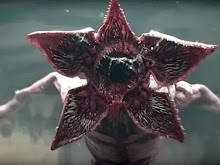Well, it's been months since the first entry on this blog and I've been feeling the need to make a new post. This being October, the month of Halloween, I've decided to share some of my favorite horror and weird fiction writers. I have been reading from a number of these authors lately, and have wanted to do a list of what I consider to be the best of the lot. After beginning work on this post, I realized that a list of these authors with comments on each of their writings would make for an incredibly long post, too long, in fact. I have decided, therefore, to simply focus on one author at a time. I begin, therefore, with some introductory remarks about what attracts me to these writers as a whole followed by my first entry, focusing on the work of Caitlin R. Kiernan.
Most of these writers fall into the category of what could be broadly called "Lovecraftian," in that their work is not focused on gore or on completely revealing their scares, but is instead more suggestive and subtle, only hinting at or offering glimpses of the strange, weird, or horrible things they write about. I have always enjoyed the sense of mystery and the notion of hidden things found in out of the way places that these writers cultivate, having always had an attraction to out of the way and desolate places myself as well as a sense of the "magic" that can be found in ordinary places. Even though I am a Christian, and therefore do not share the dark worldview of most of these authors, I still enjoy the sense of wonder their works conjure and the sense that there is more to reality than often meets the eye that their works hint at. I think that this sense is in keeping with the Christian belief that the material world is not all there is, but that there is another world behind or beyond it that infuses it with meaning.
Anyway, enough of my babling, here is the first entry:
I have written elsewhere about Kiernan's writings and how much I enjoy them. She is an amazing stylist who is also very adept at creating sympathetic three-dimensional characters. Her characters tend to be marginalized people who live on the fringes or outside of mainstream society such as goths, punks, gays and lesbians, prostitues, and criminals, as well as artists, writers, and musicians. One of the things that I love about her writing is her ability to fully humanize these characters, helping the reader to see that they too have inner lives, hopes and dreams; that despite their often strange or off putting exteriors, actions or professions that they are not that different from ourselves in important ways.
Her work is also excellent in conjuring a sense of wonder and strangeness, often giving the reader brief glimpses of other worlds that leave you longing to see and know more. The first story I ever read by her was "Onion," in "The Year's Best Fantasy and Horror," and I was totally captivated and left wanting more at the end of the story. Many of her stories have a Lovecraftian feel or, in some cases, even a direct connection to Lovecraft's writings, though they are never simply pastiches, but always have her own unique slant on things. Though a scientist by training, her work seems to suggest that she understands that reality extends beyond the realm of the easily rationally explainable. In a way, her work could be seen to encapsulate the ongoing tension of the science versus religion debate for a world in which religion, traditionally conceived, no longer seems to work or make sense.
For starters I recommend her collection "Tales of Pain and Wonder," or her novel "Threshold." The story "Onion," mentioned above, can be found in her collection "To Charles Fort, With Love," or in the collaborative collection with Poppy Z. Brite, "Wrong Things." It is also available in "The Year's Best Fantasy and Horror: Fifteenth Annual Collection."
